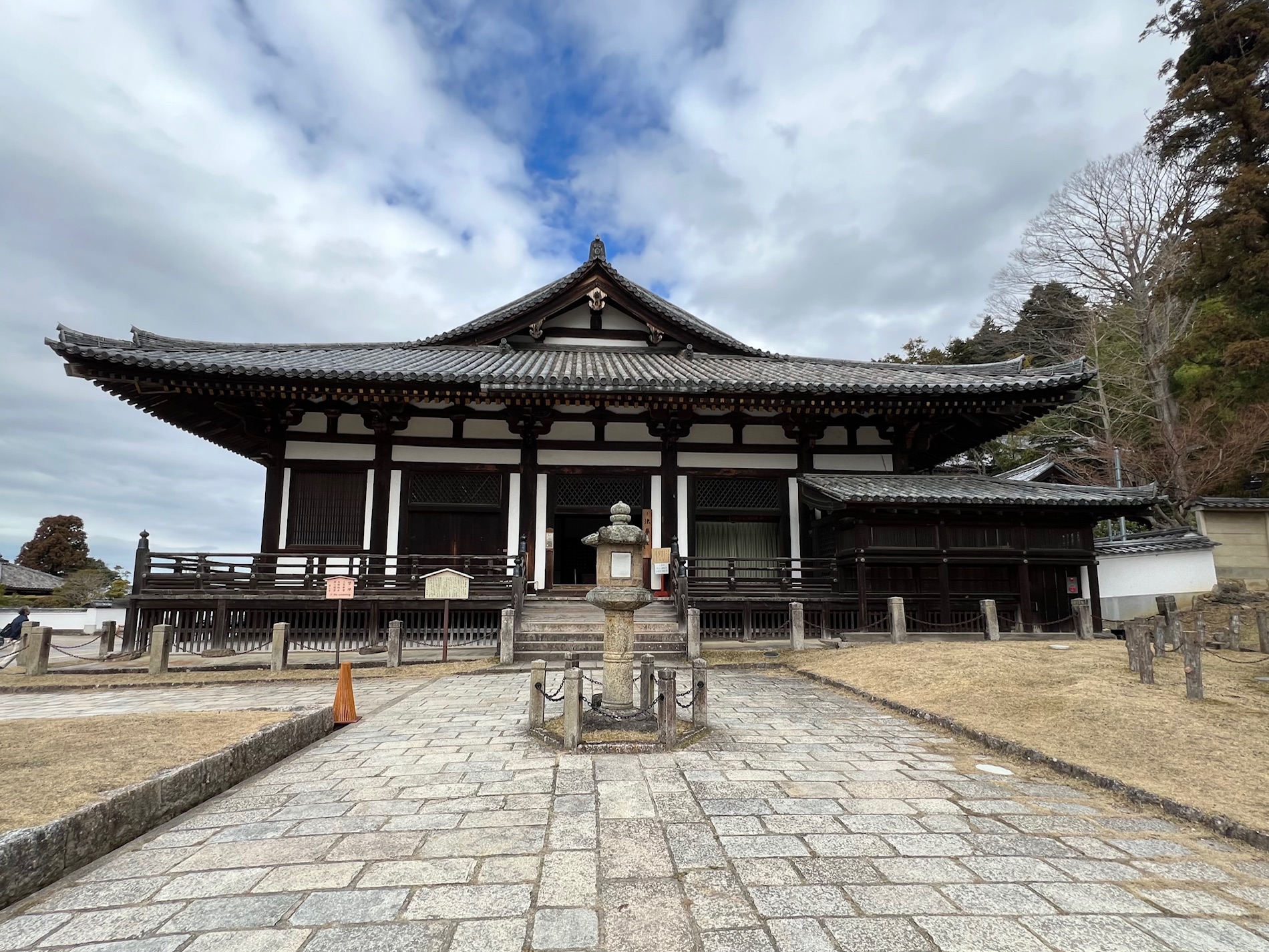As you enter through the Great South Gate and continue up the gentle slope immediately to the right, you will reach the Upper Temple area, which includes the Nigatsu-do Hall, Hokke-do Hall, Shigatsu-do Hall, and Kaizan-do Hall. On your right, you will see the large torii gate of Tamukeyama Hachiman Shrine, and to its left, facing the shrine, is the Hokke-do Hall. The Hokke-do Hall is known by many names. In ancient times, it was called “Kensaku-do” after its principal deity, Fuku Kensaku Kannon. It is also referred to as “Sangatsu-do” because the Hokke-e ceremony is held there every March. Nowadays, it is more commonly known as Sangatsu-do. When viewed from the front, the south-facing Hokke-do Hall has a truly majestic appearance, and along with the Tenga-mon Gate, it is one of the oldest surviving structures in Todai-ji Temple.

Inside the Hall
The space of the Sangatsudo Hall is vast, solemn, and sacred. The overwhelming atmosphere, as if stepping into an entirely different universe, is created by the powerful aura emitted by the standing statue of Fukukenjaku Kannon Bosatsu and the “mass” of the surrounding Nara-period sculptures. This is a space where you feel compelled to pray. I believe this is one of the places where you can most strongly sense the prayers of the people from the Nara period.
After offering your prayers, you can sit on the tatami area that faces the group of statues and fully enjoy the serene atmosphere within the hall. What makes me happiest about moving my base to Nara is that I can spontaneously visit places like Sangatsudo by bicycle from my home. It’s like leaving the present and time-traveling straight back to ancient times. A friend of mine once said, “Before I knew it, I had been sitting on the tatami in Sangatsudo for two hours,” and I completely understand that feeling.
National Treasures
Principal Image: Standing Statue of Fukukenjaku Kannon Bosatsu, Nara Period, Mid-8th Century
Standing Statue of Shukongojin, Nara Period, Mid-8th Century
Attributed Standing Statues of Nikko and Gakko Bosatsu, Nara Period, Mid-8th Century (Located in the Todai-ji Museum)
Standing Statue of Kongorikishi, Nara Period, Mid-8th Century
Standing Statues of Bonten and Taishakuten, Nara Period, Mid-8th Century
Standing Statues of the Four Heavenly Kings, Nara Period, Mid-8th Century (Located in Kaidan-in)
Important Cultural Property
Standing Statue of Benzaiten, Nara Period, Mid-8th Century

